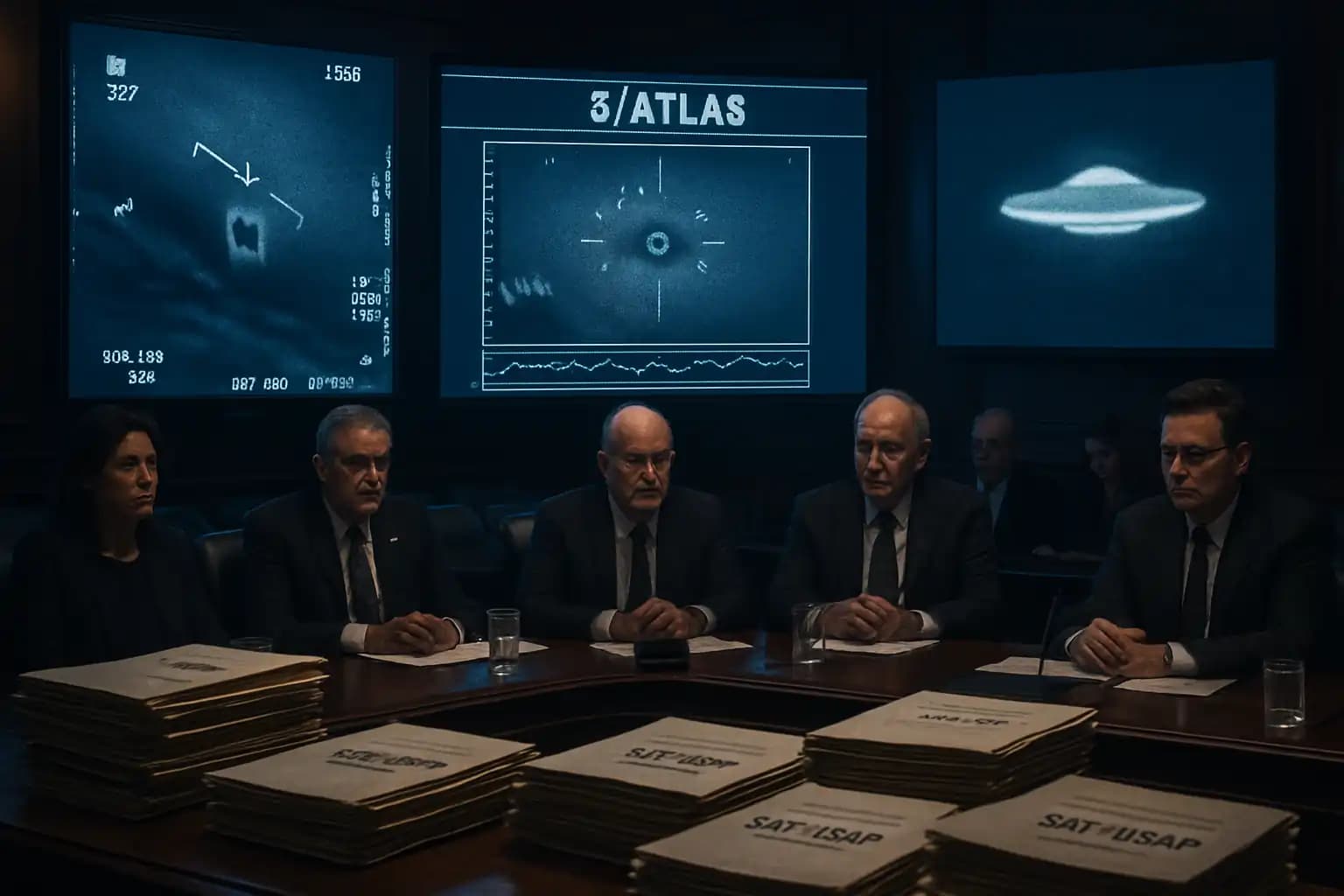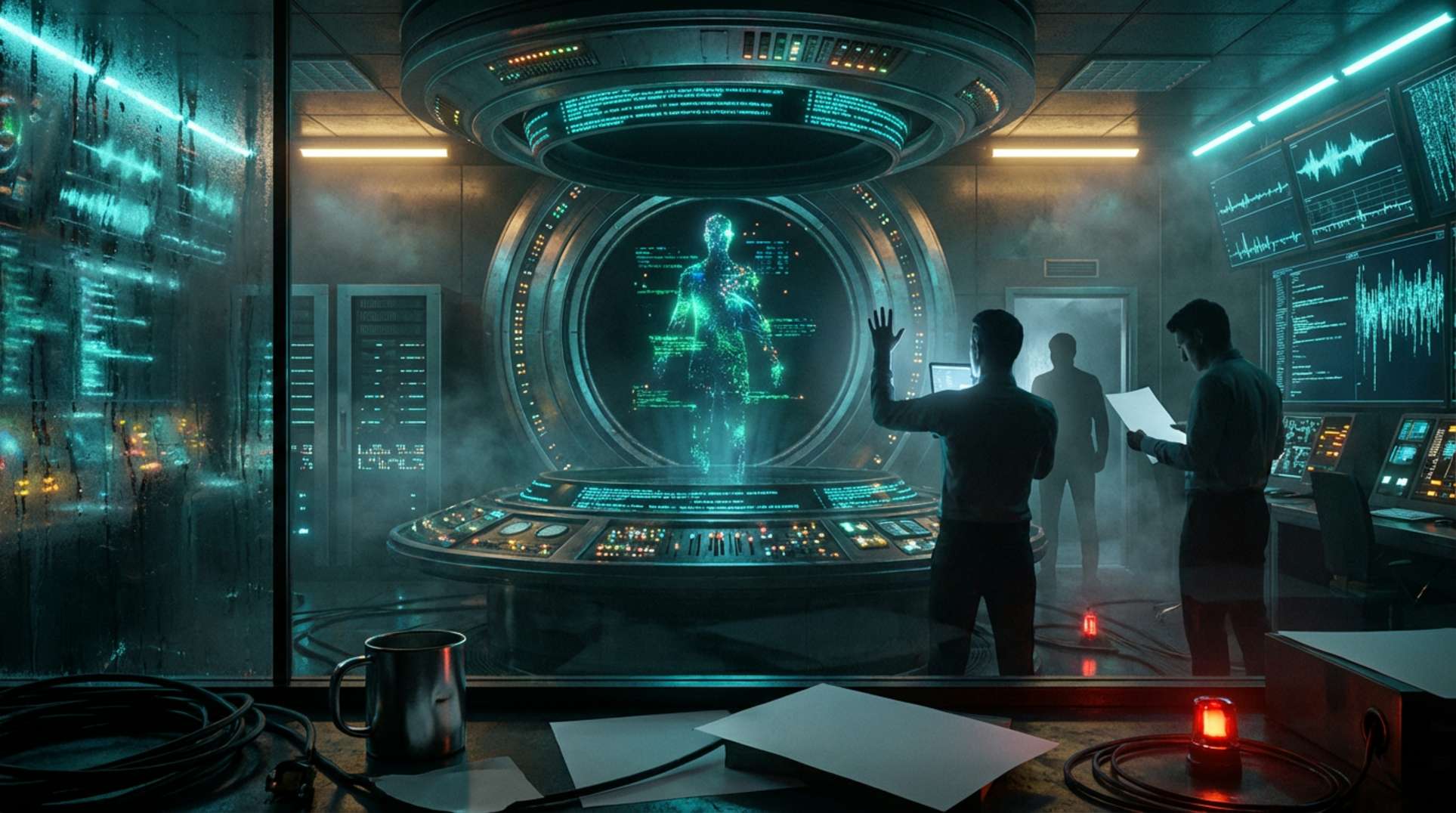UFO disclosure in America serves as a Rorschach test for belief, secrecy, and power—a point made clear in author and researcher Timothy Alberino’s recent appearance on The Ryan Files. Amid congressional hearings and whistleblower claims about non-human craft and biological entities, the gap between public disclosures and classified information widens. Alberino argues that the reality of “craft” and “biologicals” is acknowledged at high levels—shifting the debate to control over technology hidden in Special Access Programs (SAPs) and Unacknowledged SAPs (USAPs).
Crash Retrievals and Non-Human Entities: Inside the Alleged Black Programs
Alberino cites testimony from David Grusch, whose comments during a 2023 congressional hearing reignited interest: “I was informed in my official duties of a multi-decade UAP crash retrieval and reverse engineering program to which I was denied access.” According to AP News, Grusch claimed under oath that the U.S. possesses both “craft” and “non-human biologics”—though the Pentagon disputes these claims. While some allegations remain contentious, Alberino emphasizes the existence of compartmentalized programs—often linked to aerospace contractors, evading standard oversight. Whistleblower accounts and Senate discussions about rogue programs kept from Congress echo this reality. Legal loopholes surrounding SAPs and USAPs, as described by the Special Access Program protocols, contribute to these issues.
Investigative reports on state secrecy and related fields further examine this compartmentalization, evident in this deep dive on black projects and the cultural reckoning regarding government control as discussed here.
AARO, Congressional Drama, and the “Nine Debunks + One Unknown” Pattern
Amid ongoing public AARO briefings, Congress presses for answers: how many UAP cases truly elude conventional explanations? A classified December 2024 briefing evaluated over 750 new UAP reports, revealing just a dozen warranting further scrutiny (NewsNation). While most sightings can be attributed to drones, weather balloons, or sensor errors, cases that resist resolution—“the one unknown”—prompt persistent inquiries. Critics, as highlighted in public reviews, challenge AARO’s tendency to classify the majority of reports as mundane. Whistleblowers accuse the Pentagon of obscuring “reverse engineering” efforts within SAPs.
The rift between public transparency and classified information pervades investigative accounts of military risks, featured in emergency event analyses and the ambiguous communications evident in recent preparedness breakdowns.
3I/ATLAS: Interstellar Mystery and the Evidence Wars
New anomalies emerge as proxies for disclosure battles. The case of 3I/ATLAS—a Manhattan-sized interstellar visitor with abnormal tails, mysterious “pulse sequences,” and exotic material signatures—has divided the scientific community. In-depth reporting from USA Herald and The Economic Times reveals the debate: Harvard’s Avi Loeb and others assert some traits—unusual nickel alloys, power absorption, and “structured” signals—suggest engineering rather than chance. Detractors counter these assertions, citing image artifacts and incomplete data. Social media-driven “mothership” theories often accelerate ahead of evidence, while open access projects strive for clarity amidst AI-generated confusion. For an expert-driven timeline and image assessment, refer to this comprehensive science breakdown.
The fervor around 3I/ATLAS illustrates how the divide between public discourse and classified knowledge intensifies with every interstellar visitor. This trend is also evident in high-profile scientist interviews and skeptical roundtables.
Abductions, Hybrids, and the Truth Behind the Narrative
The themes of “alien abduction” and “hybridization” prevalent in Alberino’s research spark controversy. Long-term data sets, referenced in recent podcast interviews, indicate some abduction accounts retain recurring details, yet determining their origin—Earth-based entity or off-world visitor—remains unresolved. The internet age has further blurred these lines, mixing credible research with sensationalistic memes and viral clips. For an in-depth exploration of these narratives and their psychological effects, see cultural feature coverage and discussions on tech-augmented folklore in the digital age, such as this AI failure analysis.
Why is disclosure significant? In an era of AI forgeries, SAPs, and threatened whistleblowers, the struggle for truth goes beyond UFOs. It tests democratic accountability and the public’s right to know. For updates and analytical insights into the disclosure landscape, bookmark investigative leaders like Unexplained.co.





